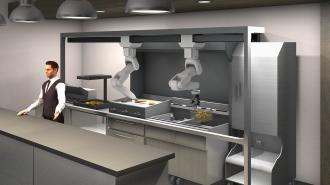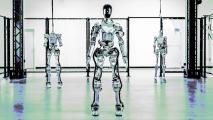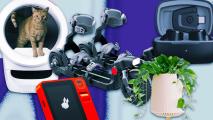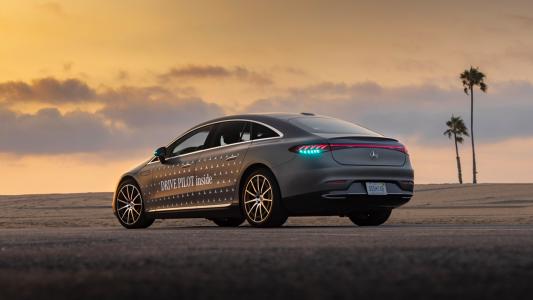AI robots are making burgers and fries at this new restaurant
AI robots are making burgers and fries on demand at a new restaurant in California, demonstrating the potential for automation to help the restaurant industry overcome a persistent labor shortage.
The challenge: Being a successful restaurateur is notoriously difficult. The average restaurant spends about 95% of the money it brings in on labor, ingredients, rent, and other expenses, and those slim profit margins mean the slightest hiccup can lead to failure.
AI robots could be cheaper, more consistent, and more reliable than human workers.
For the past few years, staffing has been a particularly huge pain point for the restaurant industry — when COVID-19 forced eateries to temporarily close their doors, many older workers opted to retire, while younger ones permanently moved on to other industries.
Even before the pandemic, though, finding and retaining reliable staff was a challenge for restaurant owners — restaurant jobs are often low-paying with long hours, unpredictable schedules, and stressful working conditions.
The idea: Automation could be the solution to the restaurant industry’s labor woes. Not only are AI robots consistent and reliable (in theory), they can also be cheaper than human workers — a key advantage for an industry operating on such slim profit margins.
While the restaurant industry has been dabbling in automation — an AI order taker here, a burrito bowl-making bot there — we haven’t seen many examples of highly automated restaurants, but one is now serving up burgers and fries in Pasadena, California.
Order up: At this restaurant, CaliExpress by Flippy, Miso Robotics’ Flippy robot prepares french fries, while its BurgerBot makes burgers from a wagyu blend, grinding the meat for each burger only after an order is placed.
That part of the process is automated at CaliExpress, too — customers place orders at self-serve kiosks where they can opt to pay for their food using face or palm recognition technology developed by PopID.
“The marriage of these various technologies to create the most autonomous restaurant in the world is the culmination of years of research, development, and investment in a family of revolutionary companies,” said John Miller, CEO of PopID and board member of Miso Robotics.
Combo meal: CaliExpress might be the world’s most autonomous restaurant, according to Miller, but it isn’t entirely autonomous — humans are still needed to assemble the burgers and package the food prepared by the AI robots. These complex and slightly varying tasks are still hard for robots.
Because all the ordering and cooking is automated, though, the restaurant says it is able to pay its employees “above average” wages, which could allow it to hire more reliable workers who will stick around longer.
“Seeing is believing.”
Alana Abbitt
Looking ahead: CaliExpress is currently open by reservation only, and it seems unlikely to expand beyond this one location — the plan seems to be for the Pasadena burger joint to serve more as a proof-of-concept for their machines than the first in a new chain of autonomous restaurants.
“What our value proposition is, is for this to be a showroom for our prospective customers and current customers to see [Miso’s technology] in a live restaurant,” Alana Abbitt, VP of product development at Miso, told the Los Angeles Business Journal. “Seeing is believing.”
We’d love to hear from you! If you have a comment about this article or if you have a tip for a future Freethink story, please email us at [email protected].






